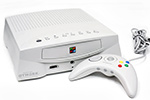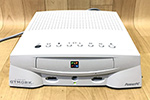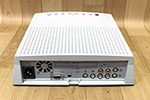The fascinating world of Apple Pippin
Launched in 1995, the Pippin was developed during a period of significant transition and experimentation at Apple. The company, known for its groundbreaking personal computers, was exploring new territories and market segments. The Pippin was part of this exploratory phase, reflecting Apple's desire to innovate and expand its influence beyond traditional computing.
From a technical standpoint, the Pippin was based on a modified version of the Macintosh platform. It utilized a PowerPC 603 processor, a notable choice at the time, given the processor's capabilities and Apple's commitment to the PowerPC architecture in its Mac computer line. The device also featured a CD-ROM drive, a notable inclusion that aligned with the era's shift towards CD-based media. Despite its innovative potential and Apple's established reputation for groundbreaking products, the Pippin encountered formidable challenges in a market swiftly being overtaken by gaming powerhouses such as Sony's PlayStation and Sega's Saturn. The Pippin's story is not just about the technology itself, but also about market positioning, consumer expectations, and the challenges of entering a highly competitive space. Delving into the Apple Pippin's narrative, we will investigate its design, features, and the underlying vision that guided its inception. Additionally, we will scrutinize the partnerships that influenced its development, assess the market's response, and identify the elements that culminated in its discontinuation. Although the Pippin's existence was fleeting, its story provides significant insights into the intricacies of the technology sector and the developmental trajectory of Apple as a corporation. Design and featuresThe design and features of the Apple Pippin showcased Apple's dedication to pioneering advancements and its anticipation of the evolving landscape of multimedia and gaming. Fundamentally, the Pippin transcended the confines of a mere gaming console; it was conceptualized as a multifaceted multimedia hub tailored for household use. Hardware specifications:
Software and interface:
The design and features of the Apple Pippin reflected a bold attempt to blur the lines between gaming consoles and computers. It was a device ahead of its time, aiming to bring a comprehensive multimedia experience to the living room. While the market's response to these features was mixed, the Pippin's design philosophy and technical choices remain noteworthy in the context of the era's technological landscape. CapabilitiesThe Apple Pippin was born out of a vision that sought to redefine the boundaries of home entertainment and computing. This vision was multifaceted, encompassing not just the realm of gaming but also educational and multimedia applications. Apple aimed to create a device that could seamlessly integrate the capabilities of a computer with the entertainment value of a gaming console. The Pippin was envisioned as a bridge between these two worlds, offering the functionality of a computer in a format accessible and appealing to the average household. Gaming experienceThe Pippin, while not boasting an extensive game library comparable to its competitors, did offer a selection of titles spanning multiple genres. Notable games for the platform included "Racing Days," a racing simulation, and "Gundam Virtual Modeler Light," which provided players the opportunity to construct and personalize virtual models. There were also educational titles like "Playskool Puzzles," which offered a variety of puzzle games for younger players. These titles showcased the Pippin's versatility as a platform that catered to both entertainment and educational needs. Educational softwareBeyond gaming, the Pippin was equipped with a range of educational software. These applications spanned various subjects, from mathematics to language arts, and were designed to be interactive and engaging. The aim was to use the Pippin's multimedia capabilities to enhance the learning experience, particularly for younger users. Multimedia featuresThe inclusion of a CD-ROM drive expanded the Pippin's functionality significantly. This feature allowed it to run CD-based multimedia content, enabling the device to serve not just as a gaming console but also as a platform for educational software and other multimedia applications. In combining gaming, educational, and multimedia capabilities, the Apple Pippin stood out as a multifunctional device. Apple's strategy was to create a platform that was not only entertaining but also educational and practical. This approach highlighted Apple's commitment to innovation and its vision of integrating technology into various aspects of home life. Market reception and challengesThe Apple Pippin's entry into the market was met with mixed reactions, and it faced several challenges that impacted its overall success. Initial receptionFollowing its launch, the Pippin attracted attention, largely due to Apple's well-known innovative streak. Nonetheless, the reception it received was varied. Some lauded its ambitious goal of amalgamating gaming, education, and multimedia into a single platform, while others expressed skepticism regarding its place in a market that was already saturated. The Pippin's relatively high price point, compared to other gaming consoles at the time, also raised concerns among potential consumers. Competition and challengesDuring the mid-90s, the gaming console market was fiercely competitive, with industry giants such as Sony's PlayStation and Sega's Saturn holding dominant positions. In this environment, the Pippin faced the dual challenge of competing based on gaming capabilities and establishing brand recognition in the gaming sector, a domain where Apple was comparatively a newcomer. Another challenge was the limited game library. Despite partnerships with Bandai and other developers, the Pippin's game selection was modest compared to its competitors, which limited its appeal to hardcore gamers. Additionally, the Pippin's multifunctionality, while innovative, may have confused consumers who were accustomed to devices with more singular purposes. Marketing and distribution were also areas of challenge. While Bandai's involvement was crucial, especially in the Japanese market, the Pippin struggled to gain a strong foothold in other regions. Effective marketing strategies that clearly communicated the Pippin's unique value proposition were lacking, which hindered its market penetration and consumer awareness. The market reception and challenges faced by the Apple Pippin highlight the complexities of introducing a new and innovative product into a highly competitive market. Despite its technological advancements and multifunctional capabilities, the Pippin's journey was a testament to the importance of clear positioning, robust content libraries, and effective marketing in the success of a tech product. The demise of Apple PippinThe Apple Pippin's tenure in the technology market was brief, and its discontinuation resulted from a combination of factors that collectively contributed to its demise. Reasons for failure:
Market impactThe discontinuation of the Apple Pippin left a minor footprint in the gaming and tech industry. While it did not achieve commercial success, its attempt to integrate gaming, education, and multimedia into a single platform was a notable endeavor. The Pippin's demise served as a learning experience for Apple and highlighted the challenges of entering and competing in new market segments. User experiencesThe Apple Pippin, despite its short lifespan, did have a user base that interacted with the device and formed opinions based on their experiences. These user experiences and testimonials provide insights into the real-world usage of the Pippin and how it was perceived by those who engaged with it. Positive aspects:
Negative aspects:
Summary of Apple Pippin's journeyIn summary, the Apple Pippin's trajectory exemplifies a tale of ambition and innovation, juxtaposed with challenges and unrealized potential. This account accentuates the complex challenges inherent in introducing a novel product within a highly competitive market. It underscores the importance of precise market positioning, the necessity of a substantial content library, and the implementation of effective marketing strategies. Despite the Pippin's brief existence, its legacy offers valuable insights relevant to the dynamic and ever-evolving field of technology. |


 In the mid-90s, the tech world witnessed the birth of the Apple Pippin, a unique and ambitious product designed as a multimedia technology platform. Often overlooked in tech history, the Pippin represents a blend of innovation, aspiration, and lessons in market dynamics. Officially known as the "Pippin Atmark," this device was not just a standalone product; it was an entire platform. Apple envisioned it as a low-cost computer aimed at the home market, with a focus on gaming and educational software. However, its capabilities extended beyond these domains, encompassing features like web browsing and multimedia functions.
In the mid-90s, the tech world witnessed the birth of the Apple Pippin, a unique and ambitious product designed as a multimedia technology platform. Often overlooked in tech history, the Pippin represents a blend of innovation, aspiration, and lessons in market dynamics. Officially known as the "Pippin Atmark," this device was not just a standalone product; it was an entire platform. Apple envisioned it as a low-cost computer aimed at the home market, with a focus on gaming and educational software. However, its capabilities extended beyond these domains, encompassing features like web browsing and multimedia functions.


